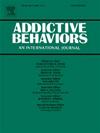不良童年经历、种族和民族认同与大麻使用结果之间的关系
IF 3.6
2区 医学
Q1 PSYCHOLOGY, CLINICAL
引用次数: 0
摘要
童年不良经历(ace)和开始使用大麻的年龄与大麻使用障碍(CUD)有关,但它们在种族和民族之间的差异影响尚不清楚。使用NESARC-III,我们研究了不同种族和族裔群体(非西班牙裔白人、西班牙裔、黑人/非裔美国人、亚洲人、美洲印第安人/阿拉斯加原住民)的ace、发病年龄及其与终生大麻使用和CUD的相互作用。方差分析发现,美洲印第安人/阿拉斯加原住民报告的终生大麻使用和CUD的患病率最高,ace的平均数量最多,大麻发作的年龄最早。使用逻辑回归,按种族和民族分层并根据社会人口统计学特征进行调整,我们发现随着ace的增加,所有组的终身使用几率(aORs 1.48-2.48),终身CUD (aORs 1.45-3.03)和过去一年的CUD (aORs 1.46-2.28)都增加。ace和CUD之间的关系在亚洲/太平洋岛民受访者中最为明显。在终身使用的应答者中,发病年龄的增加与大多数组较低的终生CUD (aORs 0.85-0.94)和过去一年的CUD (aORs 0.88-0.97)相关。ace和发病年龄之间的三个显著相互作用预测了CUD。在早期接触大麻的黑人和美洲印第安人/阿拉斯加原住民中,ace与CUD的关系较弱。对于白人受访者来说,随着ace数量的增加,发病年龄对CUD发展的影响减弱。我们的研究结果强调了ace和发病年龄与从大麻使用到CUD的进展有关,以及考虑这些因素与种族和民族身份的重要性。本文章由计算机程序翻译,如有差异,请以英文原文为准。
Relations between adverse childhood experiences, racial and ethnic Identity, and cannabis use outcomes
Adverse childhood experiences (ACEs) and age of cannabis use onset are associated with cannabis use disorder (CUD), but their differential effect across race and ethnicity is unknown. Using NESARC-III, we examined ACEs, age of onset, and their interaction on lifetime cannabis use and CUD across racial and ethnic groups (Non-Hispanic White, Hispanic, Black/African American, Asian, American Indian/Alaska Native). ANOVAs found that American Indian/Alaska Native individuals reported the greatest prevalence of lifetime cannabis use and CUD, the greatest mean number of ACEs, and the earliest age of cannabis onset. Using logistic regressions, stratified by race and ethnic groups and adjusted for sociodemographic characteristics, we found that as ACEs increased, the odds of lifetime use (aORs 1.48–2.48), lifetime CUD (aORs 1.45–3.03), and past-year CUD (aORs 1.46–2.28) increased for all groups. The relations between ACEs and CUD were strongest among Asian/Pacific Islander respondents. Among respondents with lifetime use, increased age of onset was associated with lower lifetime CUD (aORs 0.85–0.94) and past-year CUD (aORs 0.88–0.97) for most groups. Three significant interactions between ACEs and age of onset predicting CUD emerged. Among Black and American Indian/Alaska Native individuals with an early age of cannabis initiation, ACEs exhibited a weaker relation with CUD. For White respondents, as number of ACEs increased, the impact of age of onset on CUD development diminished. Our findings highlight ACEs and age of onset as implicated in the progression from cannabis use to CUD and the importance of considering these factors in relation to racial and ethnic identity.
求助全文
通过发布文献求助,成功后即可免费获取论文全文。
去求助
来源期刊

Addictive behaviors
医学-药物滥用
CiteScore
8.40
自引率
4.50%
发文量
283
审稿时长
46 days
期刊介绍:
Addictive Behaviors is an international peer-reviewed journal publishing high quality human research on addictive behaviors and disorders since 1975. The journal accepts submissions of full-length papers and short communications on substance-related addictions such as the abuse of alcohol, drugs and nicotine, and behavioral addictions involving gambling and technology. We primarily publish behavioral and psychosocial research but our articles span the fields of psychology, sociology, psychiatry, epidemiology, social policy, medicine, pharmacology and neuroscience. While theoretical orientations are diverse, the emphasis of the journal is primarily empirical. That is, sound experimental design combined with valid, reliable assessment and evaluation procedures are a requisite for acceptance. However, innovative and empirically oriented case studies that might encourage new lines of inquiry are accepted as well. Studies that clearly contribute to current knowledge of etiology, prevention, social policy or treatment are given priority. Scholarly commentaries on topical issues, systematic reviews, and mini reviews are encouraged. We especially welcome multimedia papers that incorporate video or audio components to better display methodology or findings.
Studies can also be submitted to Addictive Behaviors? companion title, the open access journal Addictive Behaviors Reports, which has a particular interest in ''non-traditional'', innovative and empirically-oriented research such as negative/null data papers, replication studies, case reports on novel treatments, and cross-cultural research.
 求助内容:
求助内容: 应助结果提醒方式:
应助结果提醒方式:


